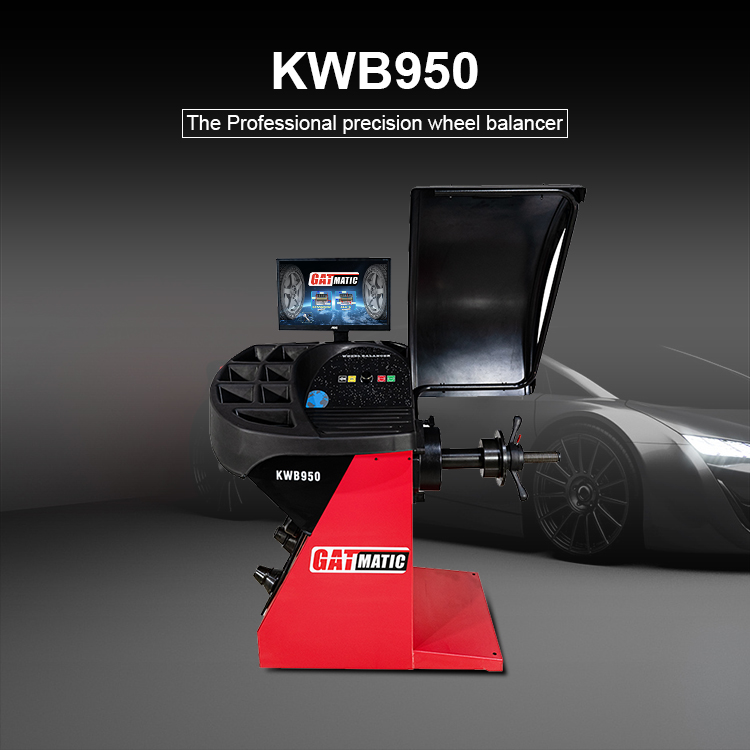How Wheel Balancer Machines Ensure a Smooth and Safe Ride
In the fast-paced world of automotive technology, the pursuit of a smooth and safe ride is paramount. One often-overlooked aspect contributing to this experience is the precision and efficiency of wheel balancer machines. These machines play a crucial role in addressing wheel imbalance, ensuring optimal performance, and enhancing safety on the road.
II. Understanding Wheel Balancing
Wheel imbalance, caused by various factors such as uneven tire wear or manufacturing discrepancies, can lead to a host of issues. Recognizing the symptoms, such as vibrations and uneven tire wear, is vital. Wheel balancer machines, equipped with advanced sensor systems and microprocessor technology, are designed to identify and rectify these imbalances through a meticulous balancing process.
III. Components of Wheel Balancer Machines
The intricate workings of wheel balancer machines involve sophisticated sensor systems, including laser and optical sensors, coupled with cutting-edge microprocessor technology. These components work seamlessly to execute precise calculations and automated adjustments, ensuring accuracy in the balancing process.
IV. Wheel Balancer Machine Operation
The operation of wheel balancer machines involves a systematic approach, from the initial setup to the final correction. Mounting the wheel correctly and inputting specifications are crucial steps. As the wheel spins, the machine measures and analyzes imbalance, offering various correction options to achieve optimal balance.
V. Benefits of Wheel Balancer Machines
The benefits of employing wheel balancer machines extend beyond a smooth ride. Improved vehicle performance, an extended tire lifespan, and enhanced safety on the road are among the advantages. Reduction of vibrations and noise further contribute to a more comfortable driving experience.
VI. Importance of Regular Wheel Balancing
Understanding the impact of imbalanced wheels on various vehicle components emphasizes the importance of regular wheel balancing. The recommended frequency of this maintenance task, integrated with routine vehicle care, ensures a consistently smooth and safe driving experience.
VII. Challenges in Wheel Balancing
External factors, such as environmental and road conditions, pose challenges to maintaining wheel balance. However, advancements in balancing techniques, including adaptive balancing, have addressed these challenges, providing solutions for diverse driving conditions.
VIII. Advancements in Wheel Balancer Technology
The evolution of wheel balancer technology has led to integration with vehicle systems, offering features like adaptive balancing and real-time monitoring. Smart features and connectivity, such as remote diagnostics and software updates, exemplify the continuous improvement in this field.
IX. Industry Standards and Regulations
Compliance with safety standards and certification requirements ensures that wheel balancer machines meet established industry norms. Calibration, an integral aspect of their functionality, adds an extra layer of precision to their operation.
Conclusion
In conclusion, wheel balancer machines play a pivotal role in ensuring a smooth and safe ride. As technology continues to advance, the integration of smart features and adherence to industry standards further solidify their importance in the realm of automotive maintenance. Regular use of these machines not only enhances driving comfort but also contributes to overall road safety, making them indispensable in the modern automotive landscape.
Get Access Now: https://www.gat-matic.com
FAQs
1. What is wheel balancing, and why is it important for a vehicle?
Wheel balancing is the process of equalizing the weight of a vehicle’s wheels and tires to eliminate vibrations and ensure a smooth ride. It is essential for vehicle performance, tire longevity, and overall driving comfort.
2. How do I know if my vehicle needs wheel balancing?
Signs of wheel imbalance include vibrations in the steering wheel or seat, uneven tire wear, and a shaking sensation while driving. If you experience any of these symptoms, it’s advisable to have your wheels balanced.
3. How often should I balance my vehicle’s wheels?
Wheel balancing is recommended every 6,000 to 10,000 miles or as part of regular maintenance. However, it may be necessary more frequently if you notice signs of imbalance or after significant changes such as tire replacement.
4. Can I balance my wheels at home, or is it best left to professionals?
While basic wheel balancing can be done at home using portable balancing kits, professional wheel balancer machines provide more accurate results. Professionals are equipped to handle various balancing challenges and ensure precise adjustments.
5. What causes wheel imbalance in the first place?
Wheel imbalance can result from factors such as uneven tire wear, manufacturing variations, or the accumulation of dirt and debris on the wheels. It can also be caused by external factors like hitting potholes or curbs.
Describe Your Needs In Detail!
We will carefully evaluate your needs and give professional solutions.



